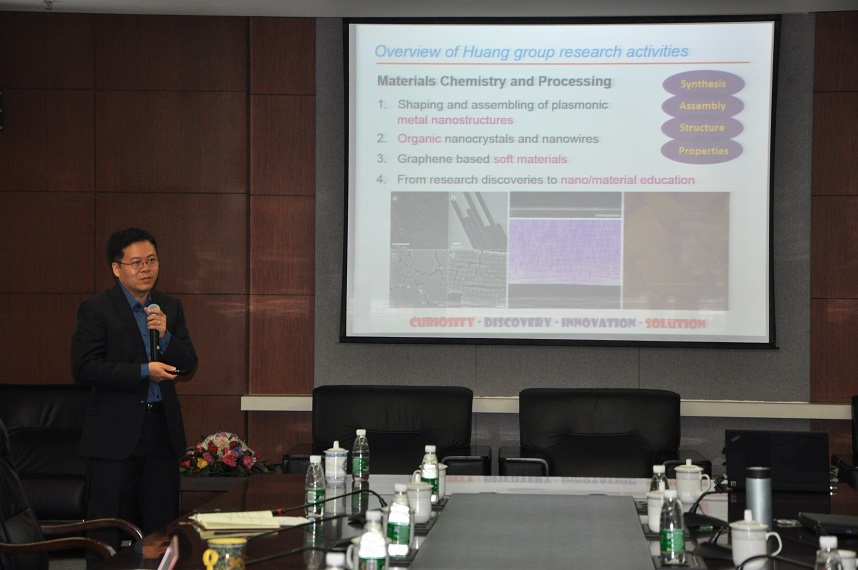时间:2014年7月7日10:00
地点:科技创新大楼C501室
演讲学者:美国西北大学黄嘉兴副教授
Soft Carbon Sheets: Curiosities, Challenges and Solutions
Jiaxing Huang
Department of Materials Science and Engineering
Northwestern University, Evanston, IL 60208 USA
Email:Jiaxing-huang@northwestern.edu
Graphite oxide sheets, now called graphene oxide (GO), are made by exfoliation of graphite using century-old chemical reactions. Interest in this old material has resurged with the rapid development of graphene since 2004, as GO is considered to be a promising precursor for bulk production of graphene. Apart from making graphene, GO itself also has many intriguing properties. For example, GO can be viewed as a two-dimensional (2D) soft material such as polymer, highly anisotropic colloid that can form liquid crystals, membrane, or 2D surfactant.
In this talk, some curiosity driven discoveries will be shared such as the use of GO as surfactant to process insoluble materials in water. GO sheets are also 2D building blocks to construct massive arrays of 2D nanofluidic channels with high ionic conductivity. Next, a few problems associated with the manufacturing and processing of GO and its graphene product will be discussed, such as the difficulties of imaging these single atomic layers and their ease of aggregation during processing. Strategies and solutions to address these problems will be introduced. Some applications in photovoltaics and energy storage will be discussed.
Keywords: Graphene oxide, surface activity, colloidal surfactant, all-carbon solar cells, fluorescence quenching microscopy (FQM), aggregation-resistant graphene, crumpled graphene balls, nanofluidic ion channels
Short Biography:
Jiaxing Huang is an Associate Professor of Materials Science and Engineering at Northwestern University. His main research interest is in the general area of material chemistry, processing and manufacturing. Some of the examples include 2D soft materials, organic nanocrystals and metal nanostructures. He is also interested the application of these materials in energy and sustainability, as well as using them as a platform for materials education. He is a recipient of the IUPAC Young Chemists Prize, the NSF CAREER Award, the Sloan Fellowship, the Outstanding Young Manufacturing Engineer Award from the Society of Manufacturing Engineers, and the Guggenheim Fellowship. Recently, he has been named by Thompson Reuters as a “Highly Cited Researcher” in Chemistry.

